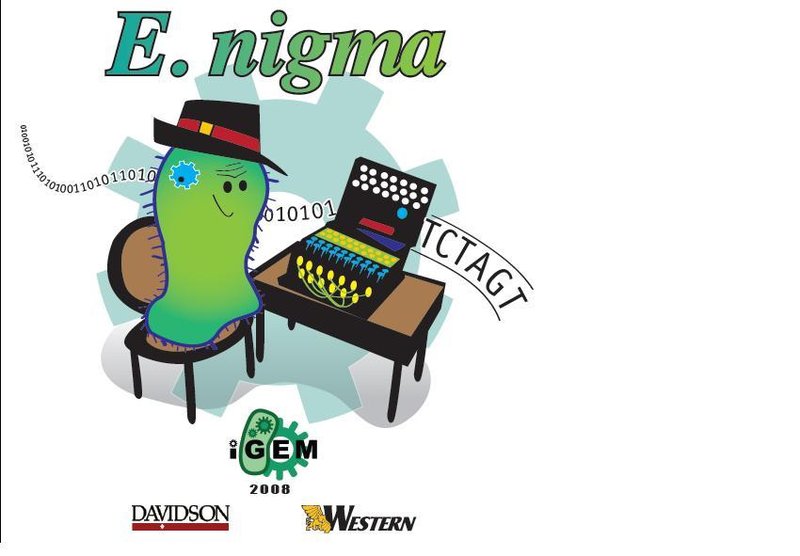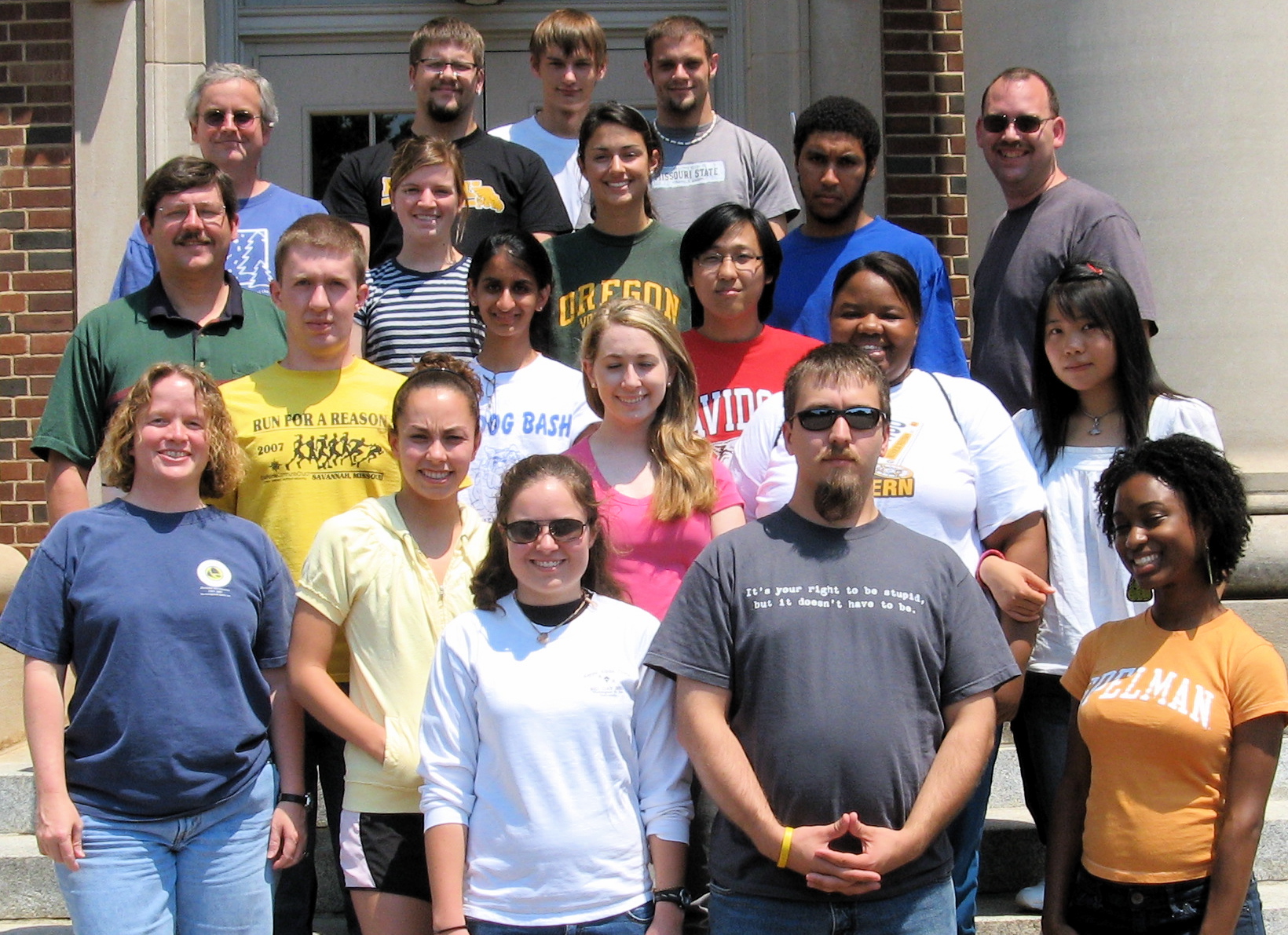Team:Davidson-Missouri Western/Team
From 2008.igem.org
| Line 1: | Line 1: | ||
| - | [[Image:iGEM2008Team_logo.jpg|479 px]] | + | [[Image:iGEM2008Team_logo.jpg|479 px]][[Image:Chambers_TeamPic_070308.jpg|right|thumbnail|500px|The Davidson / Missouri Western synthetic biology team]] |
| - | + | ||
| - | + | ||
| - | [[Image:Chambers_TeamPic_070308.jpg|right|thumbnail|500px|The Davidson / Missouri Western synthetic biology team]] | + | |
'''Team Description''' | '''Team Description''' | ||
| Line 9: | Line 6: | ||
| - | [[Image:iGEM2008Team_logo.jpg|left|thumbnail| | + | [[Image:iGEM2008Team_logo.jpg|left|thumbnail|420px]] |
'''E. nigma Project Overview''' | '''E. nigma Project Overview''' | ||
With the push from a recent article about cryptographic hash functions and a world-wide challenge to create a better hash function, the team decided to work toward the design and construction of a bacterial hash function. To this end, we designed and constructed several novel dually-regulated promoters, which became the crucial new element to create the genetic circuitry needed for building XOR gates, logic gates that produce a positive result in the presence of exactly one input and a negative result otherwise. These XOR gates can then be put in sequence to create a bacterial hash function, that is, a cryptographic method of taking identifying a "digital fingerprint" of a message. The name of the project is a play on the name of the World War II coding machine used by the German U-boats, that was eventually seized and turned the tide of the war. | With the push from a recent article about cryptographic hash functions and a world-wide challenge to create a better hash function, the team decided to work toward the design and construction of a bacterial hash function. To this end, we designed and constructed several novel dually-regulated promoters, which became the crucial new element to create the genetic circuitry needed for building XOR gates, logic gates that produce a positive result in the presence of exactly one input and a negative result otherwise. These XOR gates can then be put in sequence to create a bacterial hash function, that is, a cryptographic method of taking identifying a "digital fingerprint" of a message. The name of the project is a play on the name of the World War II coding machine used by the German U-boats, that was eventually seized and turned the tide of the war. | ||
Revision as of 20:00, 28 October 2008

Team Description
This team is composed of faculty and undergraduates from Davidson College in Davidson, North Carolina USA and from Missouri Western State University in Saint Joseph, Missouri USA and includes one student from Spelman College and one student from Hampton University. This is the third year of this iGEM collaboration for the faculty members and the first year for each of the fifteen students. This year, the team worked collaboratively from the two campuses for most of the summer but spent one week visiting each other's campuses, working shoulder-to-shoulder. The above picture was taken in July on the steps of the Chambers Building on the Davidson College campus.
E. nigma Project Overview
With the push from a recent article about cryptographic hash functions and a world-wide challenge to create a better hash function, the team decided to work toward the design and construction of a bacterial hash function. To this end, we designed and constructed several novel dually-regulated promoters, which became the crucial new element to create the genetic circuitry needed for building XOR gates, logic gates that produce a positive result in the presence of exactly one input and a negative result otherwise. These XOR gates can then be put in sequence to create a bacterial hash function, that is, a cryptographic method of taking identifying a "digital fingerprint" of a message. The name of the project is a play on the name of the World War II coding machine used by the German U-boats, that was eventually seized and turned the tide of the war.
 "
"
